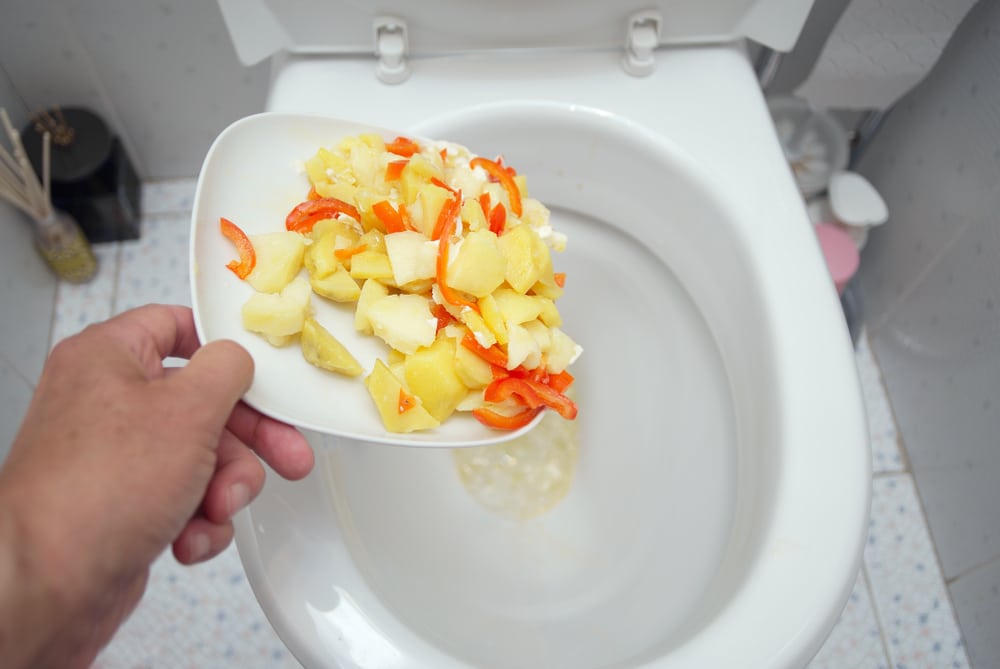Can You to Flush Food Down the Toilet?
Can You to Flush Food Down the Toilet?
Blog Article
This article listed below in relation to Is it safe to flush food (especially rice) down the toilet? is especially intriguing. Don't miss out on it.

Introduction
Many individuals are frequently faced with the dilemma of what to do with food waste, especially when it pertains to leftovers or scraps. One typical inquiry that emerges is whether it's all right to purge food down the commode. In this post, we'll look into the reasons people might take into consideration purging food, the repercussions of doing so, and alternate methods for correct disposal.
Reasons that individuals could take into consideration purging food
Absence of understanding
Some individuals may not understand the potential harm caused by flushing food down the commode. They might wrongly think that it's a safe method.
Convenience
Purging food down the toilet might look like a quick and very easy service to getting rid of unwanted scraps, specifically when there's no nearby trash can available.
Laziness
Sometimes, individuals might merely select to flush food out of large negligence, without taking into consideration the effects of their actions.
Consequences of flushing food down the bathroom
Environmental impact
Food waste that ends up in waterways can add to pollution and harm marine ecosystems. Additionally, the water made use of to purge food can strain water sources.
Plumbing concerns
Purging food can cause blocked pipes and drains, creating expensive plumbing repairs and aggravations.
Kinds of food that should not be purged
Coarse foods
Foods with coarse structures such as celery or corn husks can get entangled in pipes and trigger blockages.
Starchy foods
Starchy foods like pasta and rice can take in water and swell, bring about clogs in pipelines.
Oils and fats
Greasy foods like bacon or food preparation oils must never ever be flushed down the toilet as they can solidify and trigger obstructions.
Proper disposal methods for food waste
Utilizing a waste disposal unit
For homes geared up with waste disposal unit, food scraps can be ground up and purged via the plumbing system. Nevertheless, not all foods appropriate for disposal in this manner.
Recycling
Certain food packaging materials can be reused, lowering waste and minimizing ecological impact.
Composting
Composting is an environment-friendly means to dispose of food waste. Organic materials can be composted and made use of to improve dirt for horticulture.
The value of appropriate waste administration
Minimizing environmental harm
Correct waste monitoring methods, such as composting and recycling, help decrease air pollution and protect natural resources for future generations.
Shielding plumbing systems
By staying clear of the method of flushing food down the bathroom, homeowners can stop costly pipes repair work and keep the integrity of their plumbing systems.
Verdict
In conclusion, while it may be alluring to flush food down the bathroom for ease, it is essential to understand the prospective repercussions of this activity. By adopting appropriate waste monitoring techniques and getting rid of food waste properly, people can add to much healthier pipes systems and a cleaner setting for all.
FLUSH FOOD DOWN THE TOILET?
FLUSHING FOOD CAN CAUSE BLOCKED DRAINS IN YOUR HOME
All of the plumbing fixtures in your home are connected to the same sewer pipe outside of your home. This outdoor sewer pipe is responsible for transporting all the wastewater from your home to the Council sewer mains. Even small pieces of food that go down the kitchen sink can cause problems for your sewer. It should therefore be obvious that flushing larger bits of food, such as meat, risks a clog in either the toilet itself or the sewer pipes. Flushing greasy food is even more problematic because oil coagulates when it cools, coating the interior lining of your pipes.
THE TOILET IS NOT A BIN
Food isn’t the only thing that people shouldn’t be flushing down the toilet. People use the toilet to dispose of all kinds of things such as tampons, makeup wipes, dental floss, kitty litter and even underwear. Water goes to great lengths to educate residents about the high costs and stress placed on wastewater treatment systems simply from people flushing the wrong stuff down the toilet. It costs taxpayers millions of dollars each year, and homeowners thousands in blocked drain repairs.
FLUSHING FOOD IS A WASTE OF WATER
Flushing food is a waste of our most precious resource - water. In June this year Level 1 water restrictions were introduced to protect water supply from drought conditions. Much of New South Wales continues to be affected by prolonged drought with recent figures revealing up to 97 per cent of the state remains in drought. Depending on whether you have a single or dual flush toilet, every single flush uses between five and 11 litres of water. In the current climate this is a huge amount of water to be wasting on flushing food that should be placed in the bin (or better yet, the compost).
https://www.jabplumbingsolutions.com.au/blog/can-you-flush-food-down-the-toilet

We had been made aware of that write-up on through a good friend on another web page. Appreciated our content? Please share it. Help other people discover it. Thanks so much for going through it.
Go Deal Now Report this page